There’s a new a helix on the horizon.
In a Feb. 2 blog post, Amazon revealed the latest plans for its sprawling office complex in Arlington, Virginia. At the heart of its so-called HQ2 campus will be a 350-ft. spiraling structure it’s calling “The Helix.” Lined with trees and greenery local to the area, Amazon says it will function as a vertical promenade for employees and weekend tourists. Following the domed horticultural wonderland in its Seattle headquarters, it’s the company’s second grand monument to the biophilia hypothesis, which holds that humans have an innate urge to be close to nature.
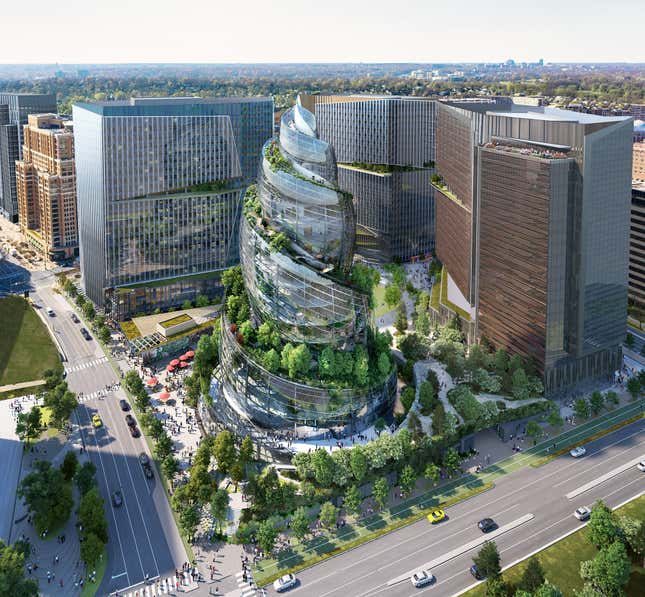
The complex’sdesigners, NBBJ Architects, say they drew from the geometry of the DNA molecule, the Milky Way, pine cones, and seashells for inspiration. The internet has also compared the Helix to soft-serve ice cream, fusilli pasta, a screw, and inevitably, the pile of poo emoji 💩.. These off-hand comparisons have become routine with every introduction of a new building proposal or corporate logo, as many reach for visual metaphors to describe something that appears unfamiliar.
But helical-shaped towers are nothing new. The history of architecture is abundant with examples of swirly structures, pre-dating the discovery of the “twisted-ladder structure” of the DNA molecule by many centuries.
A brief history of helix-shaped buildings
A twisted tower is a building with a floor plate that progressively rotates as it rises.
Built in the 9th century, the Malwiya, a 180-ft snail-shaped minaret in Iraq, is an early example of this typology. It’s the only remaining structure of the Great Mosque of Samarra, which was the biggest mosque in the world at that time. Among the most significant structures in Islamic architecture, the Malwiya is featured on the back of the 250 Iraqi dinar. In 2005, US snipers riled preservationists when they used it as an observation deck.
There’s also an uncanny resemblance between Amazon’s Helix and a mythic tower proposed by the Russian artist-architect Vladimir Tatlin in 1919. Envisioned as the hub for Communist administration in St. Petersburg, the 1,300-ft twin helix structure would have been Russia’s answer to the Eiffel Tower. Though it was never realized, Tatlin’s Tower has inspired many contemporary artists, including the late Milton Glaser, who built a clock atop the School of Visual Arts Theater in Manhattan after its form. In 2012, British structural engineer Philip Cooper contended that the Russian structure would have collapsed under its own weight if it was built.
The 295-ft spire crowning Copenhagen’s Church of Our Saviour is another distinctive helix. The black and gold baroque tower, completed in 1747, is said to have been inspired by the exterior of Rome’s Sant’Ivo alla Sapienza church, another baroque helix-shaped structure.
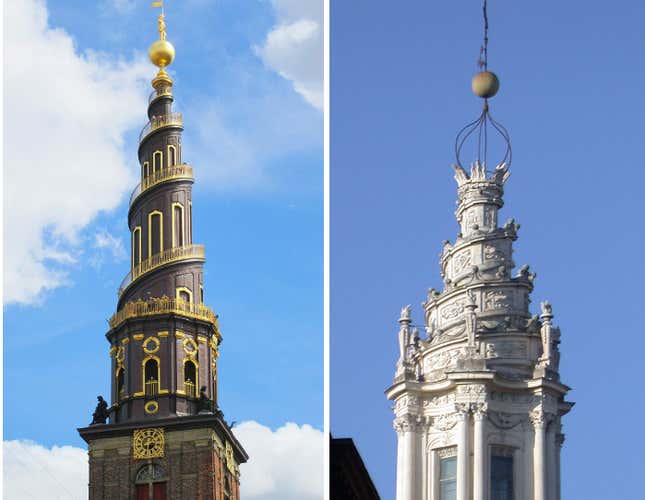
Contemporary cities, meanwhile, are enamored with dramatic, twisty glass skyscrapers. The blog Urban Hub explains that one reason developers appreciate helical structures is that they can be made more energy-efficient than standard towers: “[T]hose twists can lower energy consumption in a building by placing windows in such a way as to reduce solar heat gain.”
Malmo, Sweden has the “Twisted Torso,” a neo-futurist condo tower designed by the revered Spanish architect Santiago Calatrava. The 2,000-ft Shanghai Tower currently holds the record as the world’s tallest twisting structure. But Saudi Arabia is trying to erect an even taller and twistier engineering marvel. If completed, Jeddah’s Diamond Tower will be 3,200 feet tall and will have a 360-degree twist along its height.
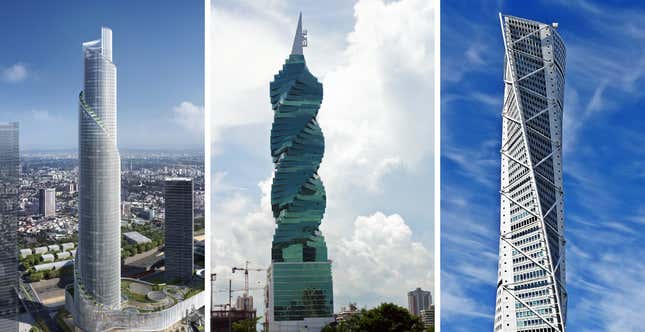
Singapore’s helix is horizontal. The 900-ft DNA-inspired pedestrian bridge is a highlight of its Marina Bay district.
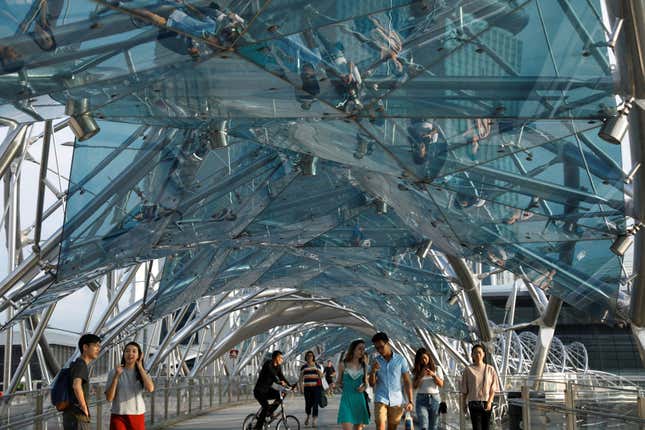
The world’s most-photographed helix-shaped building is Frank Lloyd Wright’s Guggenheim Museum in New York City. In fact, America’s great architect was obsessed with helixes. He used it in the two parking ramps of Wisconsin’s Monona Terrace Community & Convention Center, and even injected a dramatic spiral feature into the design of his son’s home in Arizona. Wright also proposed a colossal helix for an unrealized project in Pittsburgh.
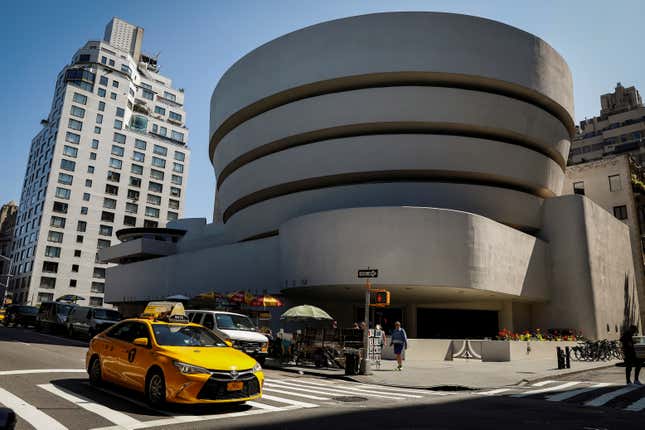
The rise of vertical gardens
Amazon’s Helix also evokes a more recent architectural trend: vertical gardens. Seen as a marquee for green architecture and an antidote to polluted urban centers, high rises with greenery-lined façades have sprouted in places like Australia, Colombia, India, Sri Lanka, and Taiwan. Beyond climbing ivy, balcony plants, and crawling vines, a new stock of buildings factor in plantings as the central part of the design.
Italian architect Stefano Boeri for instance, is on a mission to erect “vertical forests” in dense cities around the world. Starting with the Bosco Verticale in Milan in 2017, his architecture practice is working on green tower projects in several cities, including a low-cost housing project in Eindhoven, the Netherlands. Clad in live trees and local plant species, the quality of these buildings change with the seasons. The goal, Boeri explains, is to bring back biodiversity in cities. Vertical forests have also created a class of workers called “flying gardeners,” arborists who use mountaineering techniques to scale buildings twice a year to tend to the plants.
Anticipating that most employees will return to the office after the coronavirus pandemic in some capacity, Amazon is proposing to build 2.8 million square feet of office space across three 22-story buildings in Arlington. A spokesperson tells Quartz that the buildings will feature natural ventilation and have operable windows to ensure healthy air flow, which is an important facet given the heightened awareness about airborne pathogens. HQ2 will also include several spaces for outdoor meetings.
If the plans pass muster with Arlington county officials, Amazon’s East Coast office complex is projected to be completed by 2025.
